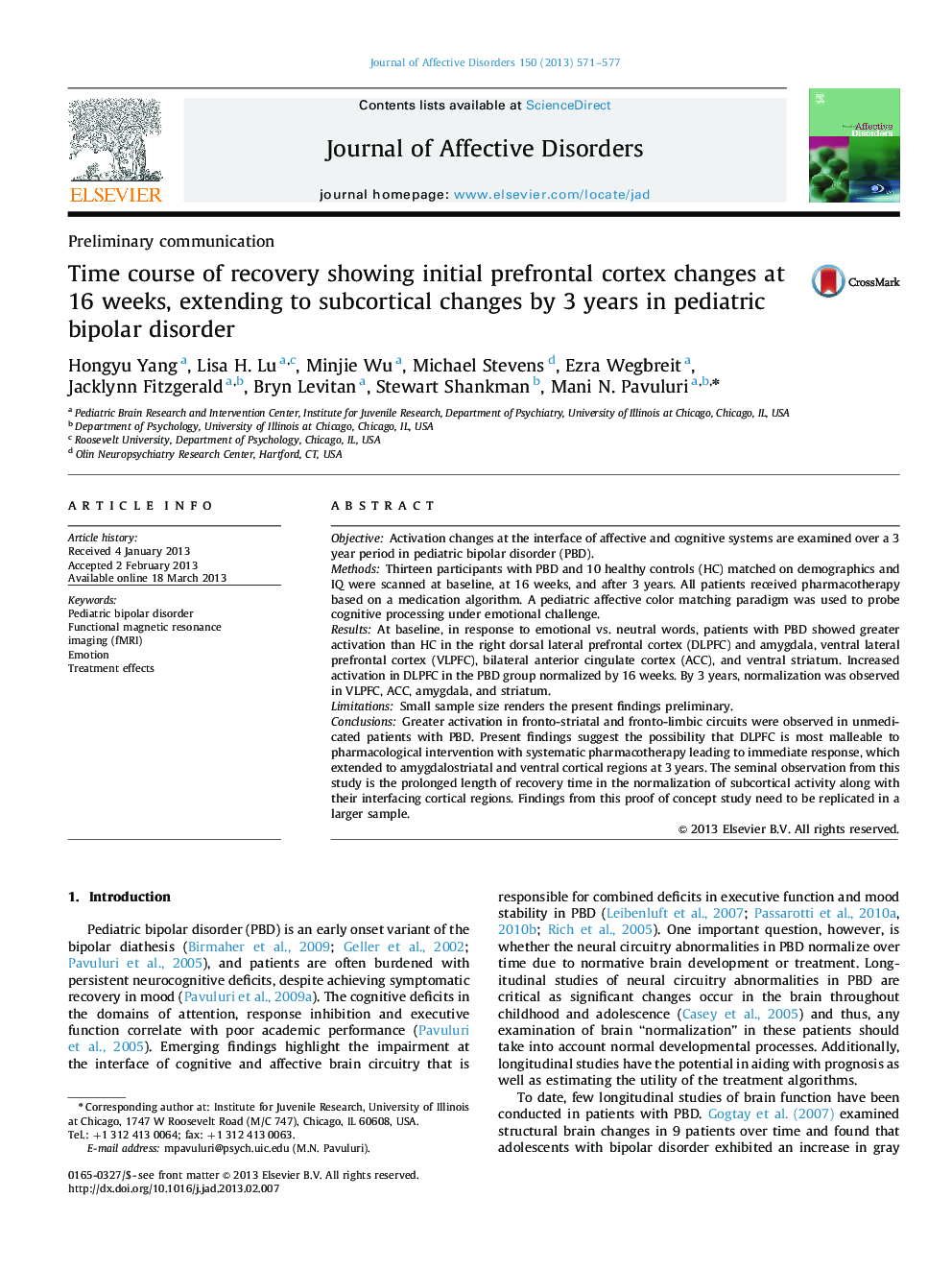| Article ID | Journal | Published Year | Pages | File Type |
|---|---|---|---|---|
| 6234335 | Journal of Affective Disorders | 2013 | 7 Pages |
ObjectiveActivation changes at the interface of affective and cognitive systems are examined over a 3 year period in pediatric bipolar disorder (PBD).MethodsThirteen participants with PBD and 10 healthy controls (HC) matched on demographics and IQ were scanned at baseline, at 16 weeks, and after 3 years. All patients received pharmacotherapy based on a medication algorithm. A pediatric affective color matching paradigm was used to probe cognitive processing under emotional challenge.ResultsAt baseline, in response to emotional vs. neutral words, patients with PBD showed greater activation than HC in the right dorsal lateral prefrontal cortex (DLPFC) and amygdala, ventral lateral prefrontal cortex (VLPFC), bilateral anterior cingulate cortex (ACC), and ventral striatum. Increased activation in DLPFC in the PBD group normalized by 16 weeks. By 3 years, normalization was observed in VLPFC, ACC, amygdala, and striatum.LimitationsSmall sample size renders the present findings preliminary.ConclusionsGreater activation in fronto-striatal and fronto-limbic circuits were observed in unmedicated patients with PBD. Present findings suggest the possibility that DLPFC is most malleable to pharmacological intervention with systematic pharmacotherapy leading to immediate response, which extended to amygdalostriatal and ventral cortical regions at 3 years. The seminal observation from this study is the prolonged length of recovery time in the normalization of subcortical activity along with their interfacing cortical regions. Findings from this proof of concept study need to be replicated in a larger sample.
